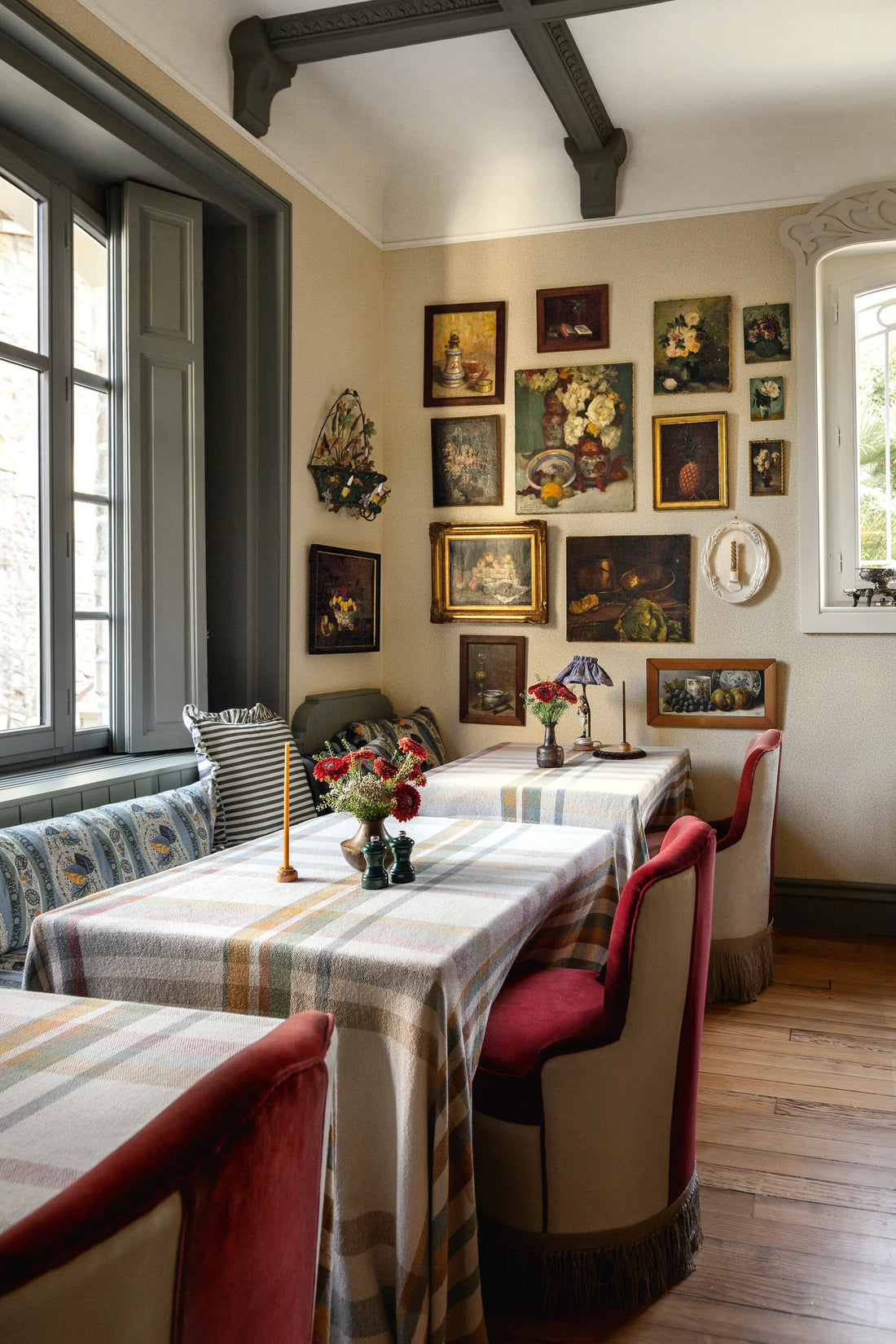
What is Vintage Maximalism?
If minimalism is about whispering, maximalism is about singing show tunes at full volume while wearing sequins. And when you add vintage into the mix, things get even juicier—think less “bare white box” and more “eclectic treasure chest curated by someone with exceptional taste and just a hint of mischief.”
But what exactly is vintage maximalism, and why is it having such a moment? Let’s dig in—preferably with a gold-plated spoon we found at a flea market.
What is Vintage Maximalism?
Vintage maximalism is an interior style that combines layered, character-rich pieces from different eras with bold color, pattern, and texture. It’s not about clutter for clutter’s sake—it's about creating a space that feels personal, collected, and unapologetically alive.
Imagine:
A 1970s velvet sofa cozying up to a Victorian mahogany table
Mid-century ceramics hanging out with Art Deco barware
Patterned rugs stacked like a textile wedding cake
Walls dripping in art, mirrors, and the occasional gilded sconce that may or may not wink at you when the light hits just right
Maximalism whispers to no one. It laughs in the face of “less is more” and says, “Actually, *more is more—*and more is fabulous.”
 image credit: Anne Haines
image credit: Anne Haines
Why Vintage?
Anyone can buy new furniture and call it “maximalist,” but vintage is what gives the look depth and soul. Pieces with a past tell stories:
That tarnished brass lamp? It once lit someone’s first apartment.
That bold 1950s floral print? It’s survived decades of trend whiplash and still looks incredible.
That stack of mismatched plates? They’ve hosted countless dinners—and probably one very questionable casserole.
Choosing vintage also makes maximalism sustainable. Instead of fast furniture, you’re investing in quality and craftsmanship that has stood the test of time. Plus, no one else will have the exact same collection—making your space as unique as your fingerprint.
image credit: Marta de La Rica
How to Do Vintage Maximalism Without Losing Your Mind
Contrary to popular belief, maximalism isn’t about piling everything you own into one room and calling it a day. There’s an art to the madness.
Pick a color story (then go wild within it).
Choose two or three anchor colors to keep the look cohesive, then add pops and surprises. Jewel tones, earthy shades, or high-contrast combos all work beautifully.
Mix eras like a pro.
Pair a Regency-style mirror with a Danish teak sideboard. Let an ’80s Memphis lamp sit next to a 1930s club chair. The tension between styles is what makes it interesting.
Pattern on pattern on pattern.
Florals with stripes? Yes. Paisley with leopard print? Absolutely. The trick is to vary the scale so they don’t fight—think big florals with small geometrics.
Curate, don’t clutter.
Every object should earn its spot. If it doesn’t spark joy and conversation, let it go (preferably to someone else’s maximalist home).
Add something slightly weird.
A framed oil portrait of a stranger. A ceramic frog wearing a crown. A lamp shaped like an ostrich. Quirk is the heartbeat of maximalism.
image credit: Martha Ward
Why People Love It
Self-expression: Your home looks like you, not like page 42 of a catalog.
Warmth: Layered textiles and aged finishes feel cozy and lived-in.
Fun: It’s impossible to be bored in a maximalist room.
Longevity: Vintage pieces age gracefully (unlike that disposable bookshelf that collapses if you breathe on it).
Final Word
Vintage maximalism isn’t just a style—it’s a philosophy: surround yourself with things you love, and don’t apologize for it. Whether it’s a gallery wall of thrifted art, a riot of jewel-toned upholstery, or a china cabinet filled with mismatched glassware, every piece should make you smile.
After all, life’s too short for beige walls and sensible furniture.
-Juliette




